This story was published in partnership with the Trace.
The lights come on in a darkened community theater, illuminating five men in wheelchairs. Childhood friends who survived the crucible of gunfire in New York City, now they've come together in this abandoned building to decide what to do next. One of the characters, the youngest in the group, touches his back with a grimace. He's in pain, and his medical bills are stacking up. Another, wearing a black cap backwards, is still struggling to accept that he can no longer command the same type of respect on the streets.
The play, titled "Fade," centers on a group of shooting survivors who decide to pool their resources to open a barber shop. Giving shape-ups and advice to a collection of locals becomes their focus, even as they're plagued by memories of what brought them here. Towards the play's end, the crew is crushed at the news of a teen slain in their neighborhood. The man in the black cap cries, for the boy but also for himself, and for the life he never got to live. "My coffin just got wheels. Everyone who loved me buried me when they saw me like this," he says. "Now I got my life back, but only half."
Watching closely from the edge of the stage are five actual gunshot survivors, wearing baseball caps, gleaming chains, and pristine sneakers. These men are the inspiration for the play, and also its creative engineers. They helped mold almost every aspect of production: They lent the characters their names, designed the programs, wrote the poem recited at the end of the third scene, and produced the hip-hop score that plays during transitions. Beginning months ago, the men had unspooled their stories for a local poet, who then stitched their humor and personal connection into each scene. They met with actors who studied their mannerisms, the ways they moved, even the cadence of their speech.
Over the next hour, the actors bicker, joke, and weep on stage. One of the real gunshot survivors, Micah Harris, is in such pain he can barely speak. But watching an actor play him gives him a matchless pride. "I saw a young man that's been through a lot and is still going through a lot, and is handling what he's going through the best way he can," he says later.
At the play's end, the actors rise from prop wheelchairs amid clapping and whooping and sniffling from the crowd. Then they gesture to the edge of the stage, where the men in motorized chairs—the real stars—roll forward, from shadow to spotlight. The applause grows louder.
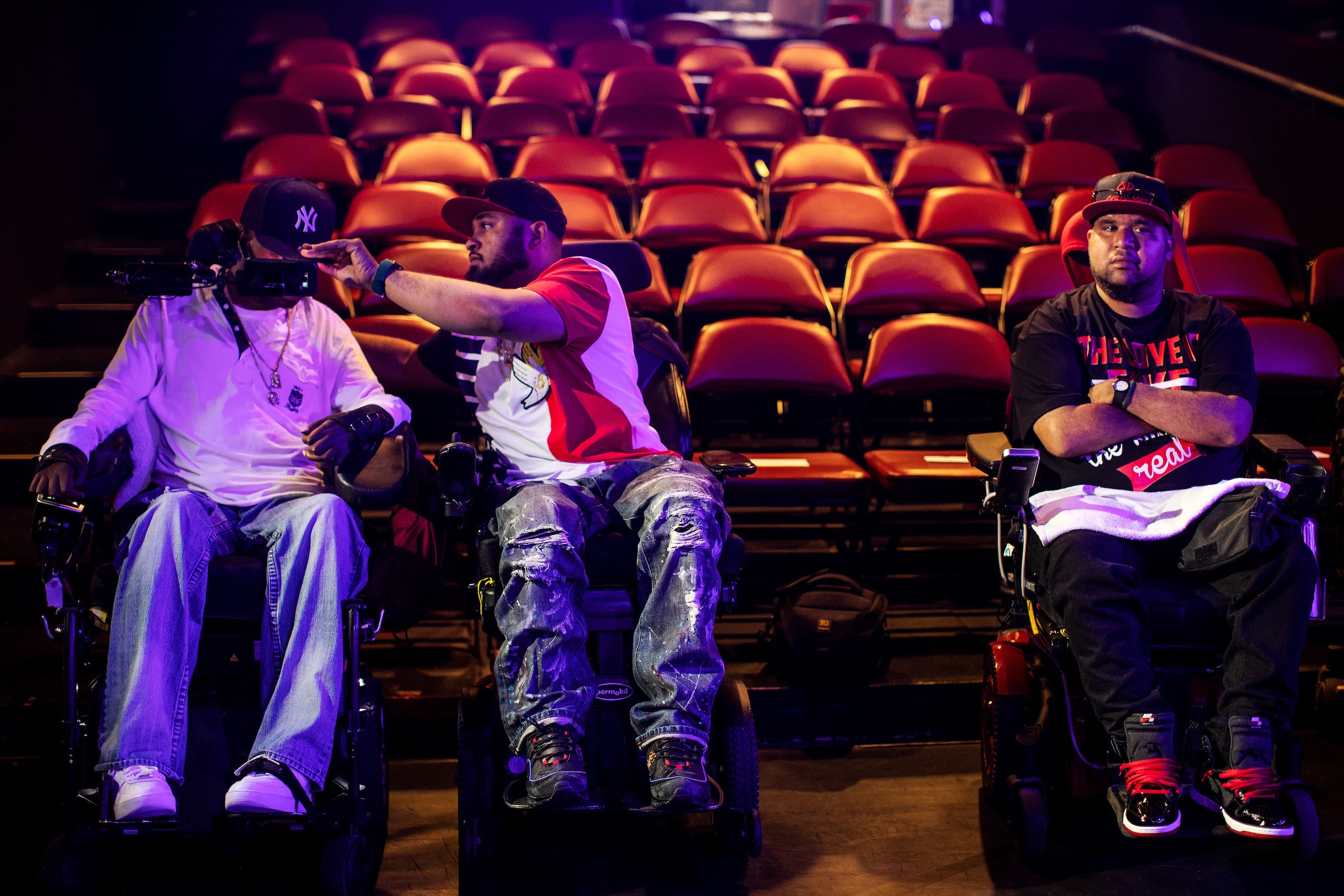
The men are members of Open Doors, an arts collective based at the nursing facility where most of them live on Roosevelt Island, a narrow stretch of land in the middle of the East River. All year they'd worked to bring a hidden story, about the hardships and complications of being a young man of color wounded by violence, to the wider world. To sit in the chair is to fight endlessly, exhaustingly: against nerve pain and muscle spasms, infections and illness, anxiety and despair.
Until a few years ago, assembling such a show would have been almost unimaginable. But when they joined Open Doors, their words and stories began to flow. In this context, they weren't dependent on other people. No one was doing it for them. They were the makers of their own reinvention.
For nearly two centuries, Roosevelt Island has served as a place for New York's unwanted. The island previously housed a number of charitable and correctional institutions, including a penitentiary, a smallpox hospital, and the insane asylum whose abusive conditions were famously exposed by journalist Nellie Bly in the late 1800s. As the Reverend J. F. Richmond wrote in his seminal survey New York and Its Institutions, the island, "separated on either side from the great world by a deep crystal current, appear[s] to have been divinely arranged as a home for the unfortunate and the suffering, and a place of quiet reformatory meditation for the vicious."
To a visitor today, Roosevelt Island feels like a stretch of calm between the lofty skyline of the Upper East Side and the industrialized western shore of Queens. Here the impatient urban soundtrack of traffic horns and emergency sirens is replaced by conversations among birds and the slosh of river against rocks. The terrain is also more spacious and accessible: Starting in the 1970s, planners and architects designed the island's public spaces with ramps, wide sidewalks, and curb cuts to accommodate the local population, which includes many people with chronic illnesses and disabilities, according to local historian Judith Berdy.
A free red bus trundles up and down Main Street, in places the island's only thoroughfare, passing a historic chapel, a public school, and a baseball diamond. It makes its northernmost stop near Coler Hospital, which opened in 1952 to serve people with chronic diseases. Coler now provides long term care to more than 500 residents with a variety of diagnoses, including dementia and paralysis. The average resident is in their mid-60s and on Medicaid. Over the years, Coler has also served a number of younger patients, including a handful of men injured by gunshots.
LeVar Lawrence, who goes by Var, came to Coler in 2013. Eight years prior, at the age of 28, he'd been shot over a dice game near the Walt Whitman Houses, the Brooklyn public housing complex where he grew up. The bullet left him paralyzed from the neck down. After a few weeks in the hospital, Var remembers being given three options for where to go: Brooklyn, New Jersey, or Roosevelt Island. He chose the island.
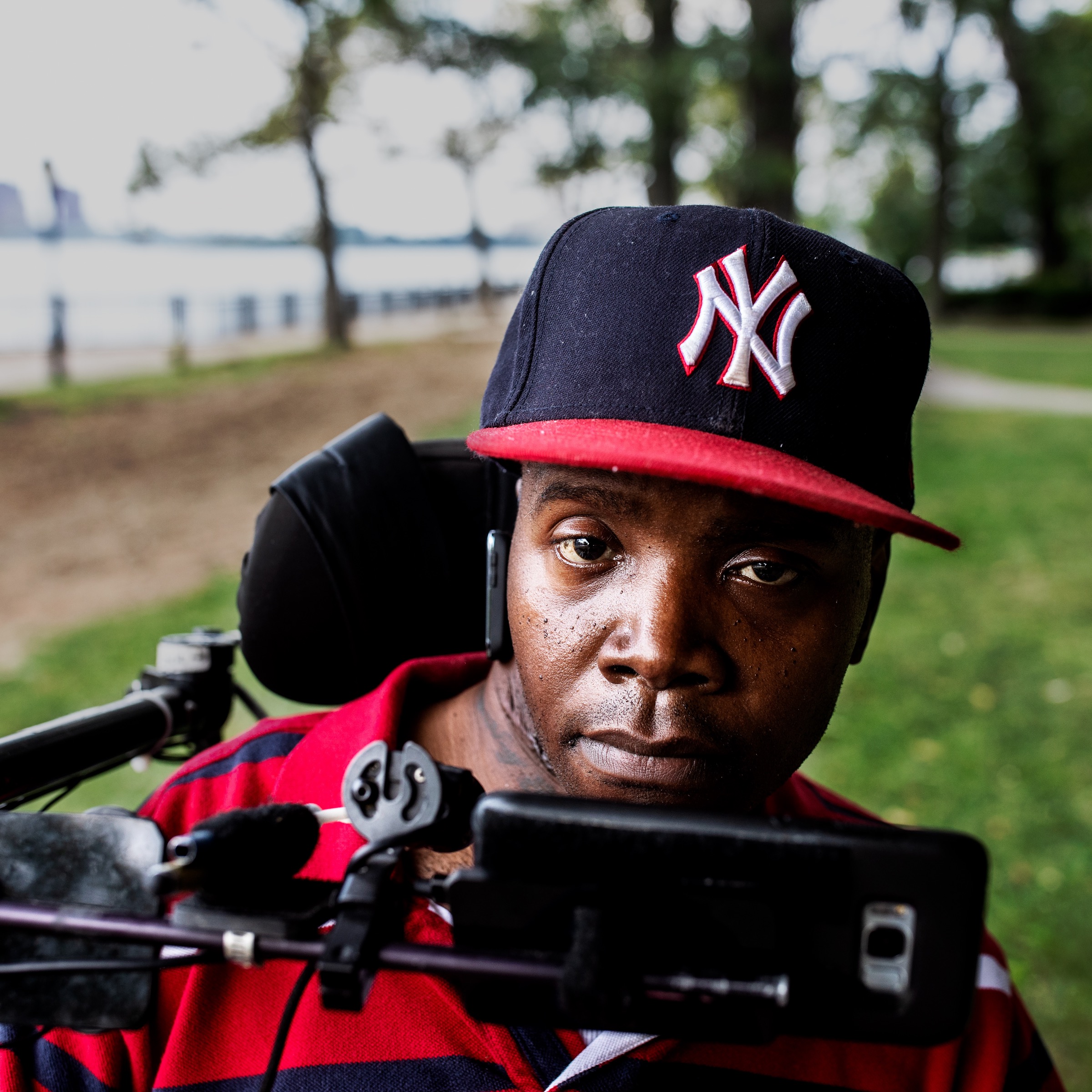
Initially Var lived at Goldwater Hospital at the island's southern tip. For two or three years, he felt depressed. "At that time it was, 'Who wants to live like this?'" he said. "I can't do nothing for myself." Back then, he used a manual chair, and had to rely on other residents to wheel him from room to room. Family and friends had to collect him from the island and take him to Brooklyn to see his kids. Sometimes, he said, no one came. Even breathing was a hazard. Once, some phlegm got caught in his throat and his roommate had to give him the Heimlich. He wasn't strong enough to cough.
At times Var wished the shooter had aimed a little higher and killed him. "I felt like I was better off dead," said Var, whose voice is gritty and low. "I had people I could talk to, I just didn't want to."
A few months before Goldwater closed to make way for Cornell's sleek new technology campus in 2013, Var moved to Coler. He missed Goldwater, where he'd made friends and adjusted to being in a chair. But gradually he got to know Coler's other residents, younger guys who shared his affinity for smoking and whose vibe he liked. Like him, some had dealt drugs and been to prison. They'd also been paralyzed by gunshot wounds in their 20s. There was Ramon "Tito" Cruz, an effusive Dominican, who'd been shot in Bushwick in 1993. There was Harris, with the Endure tattoo on his neck, who'd been shot in Crown Heights in 1999. There was Vince Pierce, a soft-spoken guy who loved rap and R&B, shot in Newburgh, New York, in 2012. And Alhassan Abdulfattaah, known as El, who'd been shot multiple times in the Bronx while walking back from the store.
Var realized he had a special bond with El. Both men had grown up in the Walt Whitman Houses, and Var knew El's older brothers. Befriending El was like finding a scrap of home.
Gradually, their circle began to form. The guys bonded over smoking, horror movies, hip-hop. Together they also endured endless medical complications and a frustrating dependence on others. "A lot of people just think you sitting in a wheelchair, but they don't know we get diarrhea, we get constipated because of medications we take, we get urinary tract infections. We're constantly in pain, I'd say 80 percent of our life," said Harris. "Can you imagine being in pain every time it rains?"
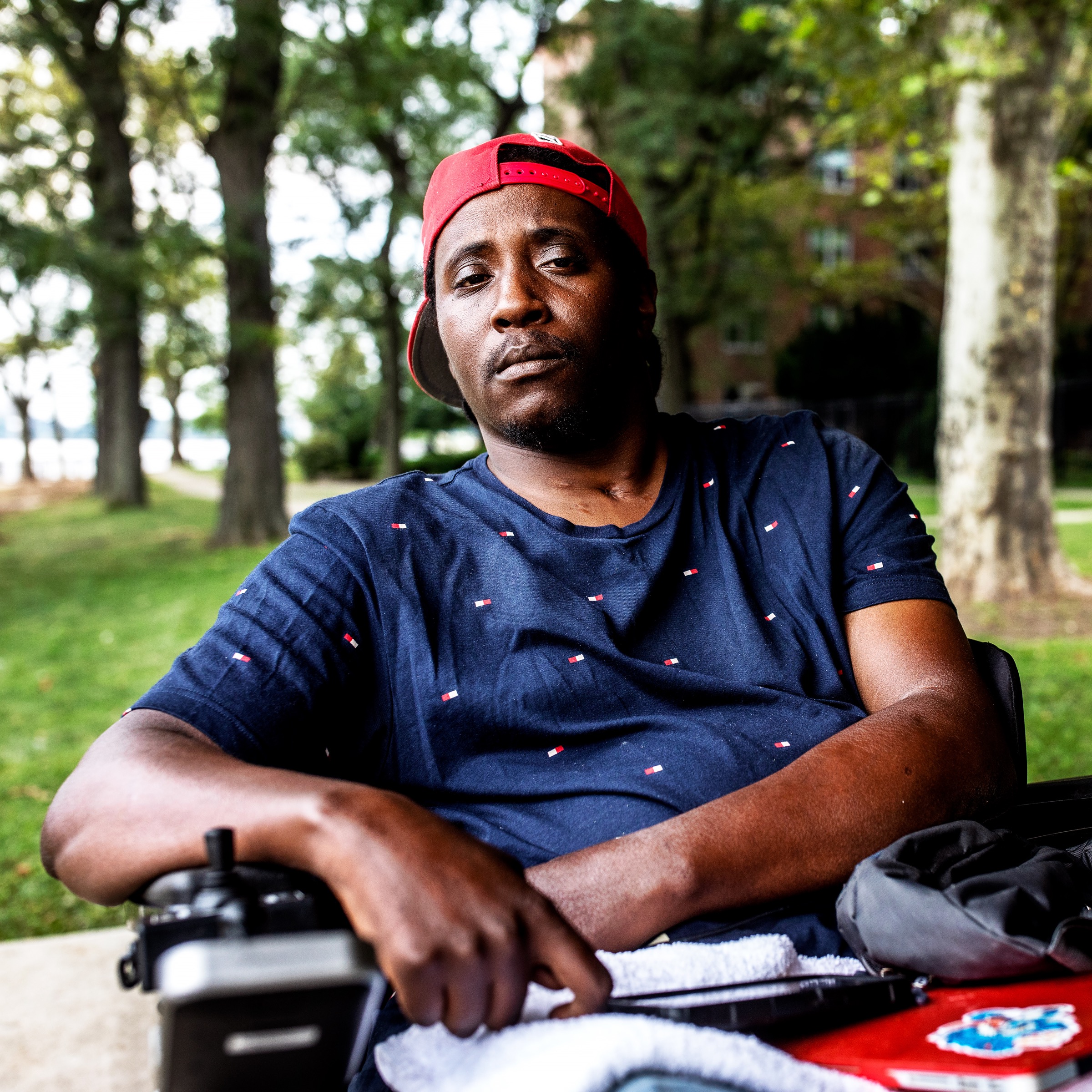
A few years later, the group got a new member, Andres "Jay" Molina, who had contracted a rare form of pneumonia that left him bedridden and unable to walk.
"No one wants to live in a nursing home," said Pierce, 33, who often wears headphones even when no music is playing. But life at Coler did have its benefits. A refuge from the rest of the city, the island felt therapeutic with its trees, birds, and views. "People feel safe here," said Cruz, 48. "You go outside, take a nap, you don't worry about people running up and robbing you."
The distance from the city could also breed boredom and a sense of aimlessness. Jovemay Santos is the director of therapeutic recreation at Coler, where she's worked for 17 years. She tried to coordinate activities that would appeal to all the residents, from movie screenings and fashion shows to cultural events and outings to Applebees and Yankees games. Coler has a computer lab and, until a few years ago, had a radio station where residents could broadcast music. But Santos observed that not everybody was engaged. "There's always been a challenge of meeting the younger guys in terms of participating in activities," she said.
Mostly, the guys entertained themselves, watching movies or playing video games. At one point, they started a tradition of ordering takeout from Chinese or Jamaican or Spanish restaurants, and then eating together at Coler. Because several have difficulty using their hands—or can't use them at all—dining is often a collaboration. "These men feed each other. They fix each other's clothes. They help each other in ways that men don't usually lend a hand to other men," said Joel François, the poet who wrote the play. Untangling each other's chains, refitting a wireless earpiece, wiping sweat from a brow, and opening a bag of chips are all part of their daily choreography.
One bone-cold afternoon this past February, El and Var zipped past the security desk and the fishtank in Coler's lobby, out the sliding door, down a ramp, and across the front of the building to a rectangle of concrete that overlooks Manhattan.
El carefully rolled a spliff, placed it in Var's mouth, and then took a drag himself. Smoking helps quiet the physical pain and calms his nerves. Noticing that the strap holding Var's foot on the footrest had come undone, El reached over to tighten it. Then Harris arrived, and the three sat close together, talking about social workers and the difficulty of finding wheelchair-accessible apartments. Var's face glowed in the light of his phone, and a speaker affixed to his wheelchair thumped a hypnotic rap about beating the odds and unpromised tomorrows.
From this spot, the men could watch the endless current of the river and the glint of the city beyond. They often came here to blast music, joke, and tell stories. "We share stuff that nobody shares," said Molina. "I'm hanging out with five people from different places in New York that were in the streets, living the street life, sitting down together wearing diapers."
Evening fell quickly, washing the sky in pale blue. Across the water, a siren wailed urgently down the parkway. Molina and Cruz showed up, and at last Pierce appeared, the last piece falling into place.
Soon after Jennilie Brewster moved to Roosevelt Island in 2014, she began volunteering at Coler. A writer and painter who’s done artist residencies all over the country, Brewster had recently become interested in contemplative care, an approach to caregiving rooted in the Buddhist practices of mindfulness and compassion. In her comings and goings from Coler, she often noticed a group of younger guys sitting outside smoking.
With their stylish clothes and sneakers, the men seemed to her like Coler's "cool kids." They also seemed isolated—castaways from more typical lives, homes, and families who'd collected at the island's furthest reach.
"I saw a group of black and brown men from under-resourced neighborhoods with high levels of crime, who'd been injured, and now were in a situation again where there was little opportunity to move forward with their lives," she said. "Jovemay [Santos] had been trying, but hadn't gotten any traction.”
With Santos' encouragement, Brewster decided to start a writing workshop geared toward the younger men. Each week she'd arrive at Coler, walk over to where Harris, Cruz, and Pierce sat outside, and invite them to come. "They were like 'Yeah, maybe we'll see you up there.' A lot of maybes," she said. A few other residents agreed to take part, but the group outside didn't seem interested.
For months, she kept trying. Molina eventually grew curious, and started doing small writing assignments. "At the beginning, the other guys didn't trust her," he said. "I explained to them, I feel like there's something there. I think we should figure it out, see what she's doing."
In June 2016, Brewster officially launched Open Doors, an initiative that promotes artistic creativity and leadership among people affected by gun violence. The following spring, several of the men prepared for their first poetry reading at a local art gallery on Roosevelt Island. When Molina fell ill a few days before the performance, Harris volunteered to read his poem for him.
Until that point, said Harris, "We didn't really have nothing going for ourselves, beside go outside, smoke, and chill. That's not really a productive life." But writing their own poetry, reading it in front of people—people who applauded them, who were intrigued and wanted to hear more—was sort of like magic. "We felt like we were celebrities," Harris added. "It just made me feel good about myself as a human being."
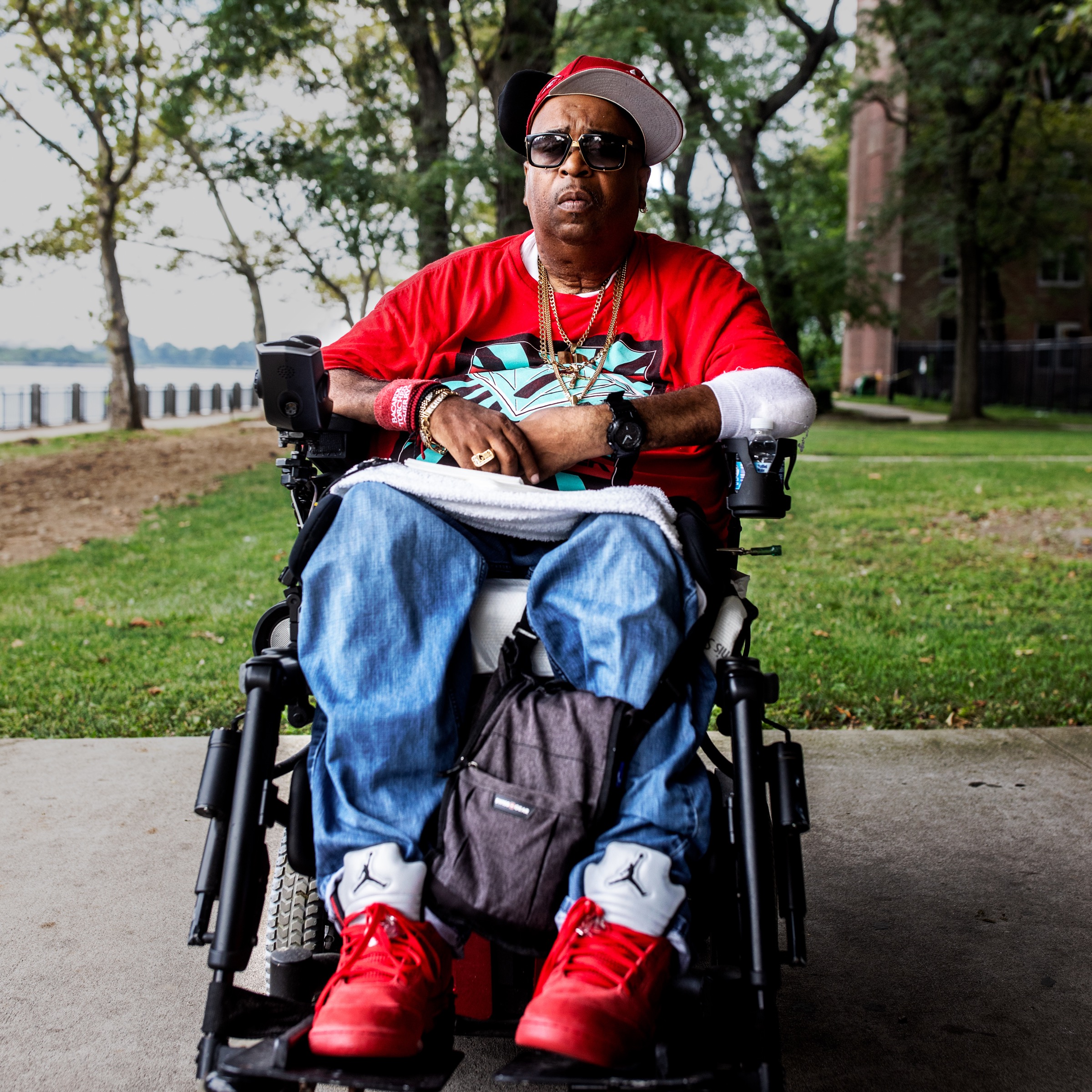
From then on, the guys started performing at venues around New York. They also visited schools to speak to young people about gun violence. A sense of purpose—something they'd either lost along the way or never fully known in the first place—began to crystallize.
With the men's involvement, Brewster's writing workshop evolved into an industrious artist collective. Cruz came up with a name for the performance troupe, the Reality Poets ("We don't sugarcoat anything. We tell things the way they are.") and Santos helped clear out a small room they could use as a clubhouse. Brewster observed, asked questions, and listened. "My goal as the leader of the project was to find out what people wanted to do, and also what they were frankly good at, and bring that out," she said.
For Pierce, it was music. An Open Doors volunteer found a local multimedia producer who came to Coler, taught him to use ProTools, and helped him assemble the equipment for a studio. Also drawn to music was Cruz, who'd played the upright bass growing up. He and Pierce collaborated on a hip-hop album, which they released in July. After a lesson in iMovie, Molina realized he wanted to make films. Open Doors gave him a grant to buy a new laptop, and he spent a summer teaching himself how to make videos and motion graphics with editing software.
Var had an eye for visual art. Growing up he'd been shy, and preferred sketching Garfield and Batman comics to playing sports. After his injury took away his ability to draw, he had to figure out another way. Occupational therapists at Coler fashioned his wheelchair with an adjustable bar that reaches across his head and holds his gadgets at eye-level with Velcro and zip ties. With a jut of his jaw he can turn the chair on and off, nudge a joystick to steer, or unstick a stylus and use his smartphone. By gripping the stylus between his teeth, Var uses an app to alter the colors and textures of photos on his phone.
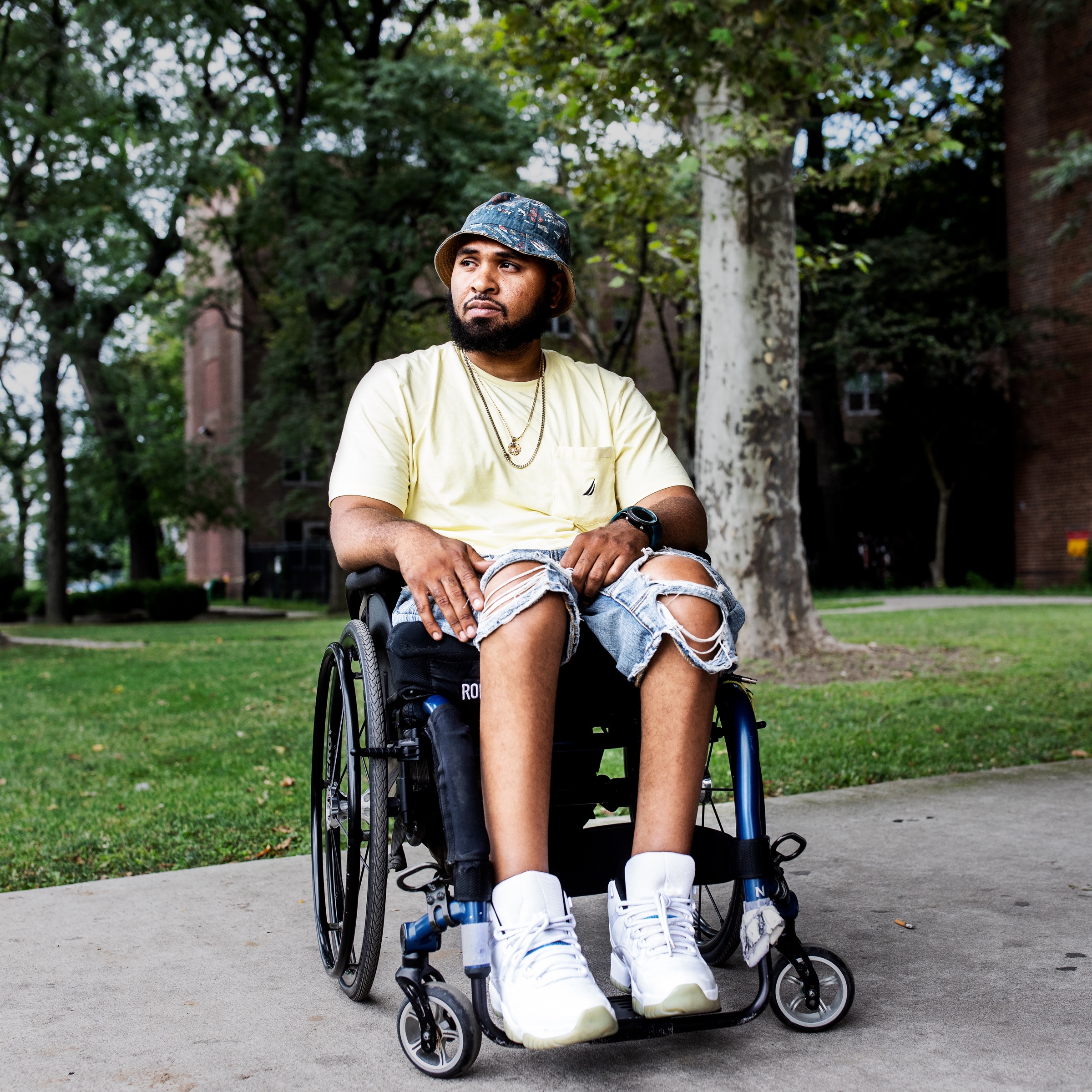
Open Doors has helped Var get more exposure for his art. Brewster had his images framed, and his work has appeared in art shows on and off the island. He started an Instagram account where he posts prismatic, otherworldly scenes under the name "The VarTist." He makes up the Open Doors design team along with El, who is pursuing a degree in computer technology and has a flair for graphic design. They often collaborate on posters, flyers, and handouts for the group’s events.
"Open Doors is asking the guys what they need and following through," said François, one of many artists, activists, volunteers, and community members who support and collaborate with the Reality Poets on various projects. The initiative is unique in that it revolves around the needs, interests, and ambitions of young men of color, who are among the most likely to be victims of violence yet least likely to receive services and support. It’s the only program of its kind within NYC Health + Hospitals, the system of public hospitals and long-term care facilities Coler belongs to.
The men receive stipends based on their level of responsibility and the projects they lead. Funding for Open Doors is administered through the Angelica Patient Assistance Program, a nonprofit that supports social and cultural programming for long-term care patients in New York.
The six Reality Poets carry around business cards printed with their names, nicknames, and roles for Open Doors: "Alhassan 'El' Abdulfattaah, Open Doors Designer" or "Andres 'Jay' Molina, Filmmaker." While a monthly activity calendar at Coler might list bingo, bible study, and crocheting, the Reality Poets' schedule is often dominated by rehearsals, performances, workshops, and meetings with local artists. In March they released "Wheeling and Healing," an anthology of poetry written by them and other Coler residents. They held the book launch party at the Bowery Poetry Club in the East Village, where they read their poems dressed in matching red before a packed house.
Collectively, their poetry is an unvarnished chronicle of violence, betrayal, limits, longing, and loss. They mourn departed friends and the ability to do simple things: peel an orange, tie a shoelace, take a shower standing up. They also depict themselves as strong and accepting—embodiments of resilience. "I'm a world class orator, wheelchair warrior," Harris writes in one of his pieces.
Over several months, François and the men co-wrote "Fade," one of their most ambitious projects yet. Molina made a biographical slideshow to run before the opening scene. Pierce and Cruz's tracks played in the background, and they performed one of their songs live. A new group member, Peter Yearwood, provided narration. Santos arranged to loan the cast manual wheelchairs to use as props. And for the play program, Var created a comic and El worked on the layout.
After the final play performance, El hosted a discussion with the audience. He beamed, dimples dug deep into his cheeks, marveling at how the actor in the role of "El" had captured him. At one point Cruz said that while gun violence sends many people to jail or to death, there’s also "an in-between, that's this wheelchair life. This is a life sentence."
Before he joined Open Doors, Cruz faced "a big question about my life, which direction I was going in. Now I can see everything clear. I know which projects I'm working on. I see me planning for the future."
The men say Open Doors changed the rhythm of their lives. It's become their true north, something to point towards.
"It's just what I needed for what happened to me," Cruz added. “Now it’s like you look forward to getting up."
When they start a project, they see it through. In late 2018, two Open Doors members died days apart, devastating the group and compelling the remaining members to look after one another with even greater vigilance. To honor them, Molina began putting together a tribute video to play at their memorial event. But then he had a stroke. The day before the event, he raced to finish the video on his laptop from the emergency room, with one working hand. "The doctors were like, 'What are you doing?!'" he said. "I was like, 'This shit has to be done.'"
Though the men were good friends before, Open Doors has built an even stronger bond. "We travel together, we eat together, we talk together, we watch movies together, we do mostly everything together," said Harris. "If one is feeling down about family problems, or depression problems, or financial problems, we talk to the other to try to cheer them up. If one doesn't have, the other gives. We stick together as much as possible."
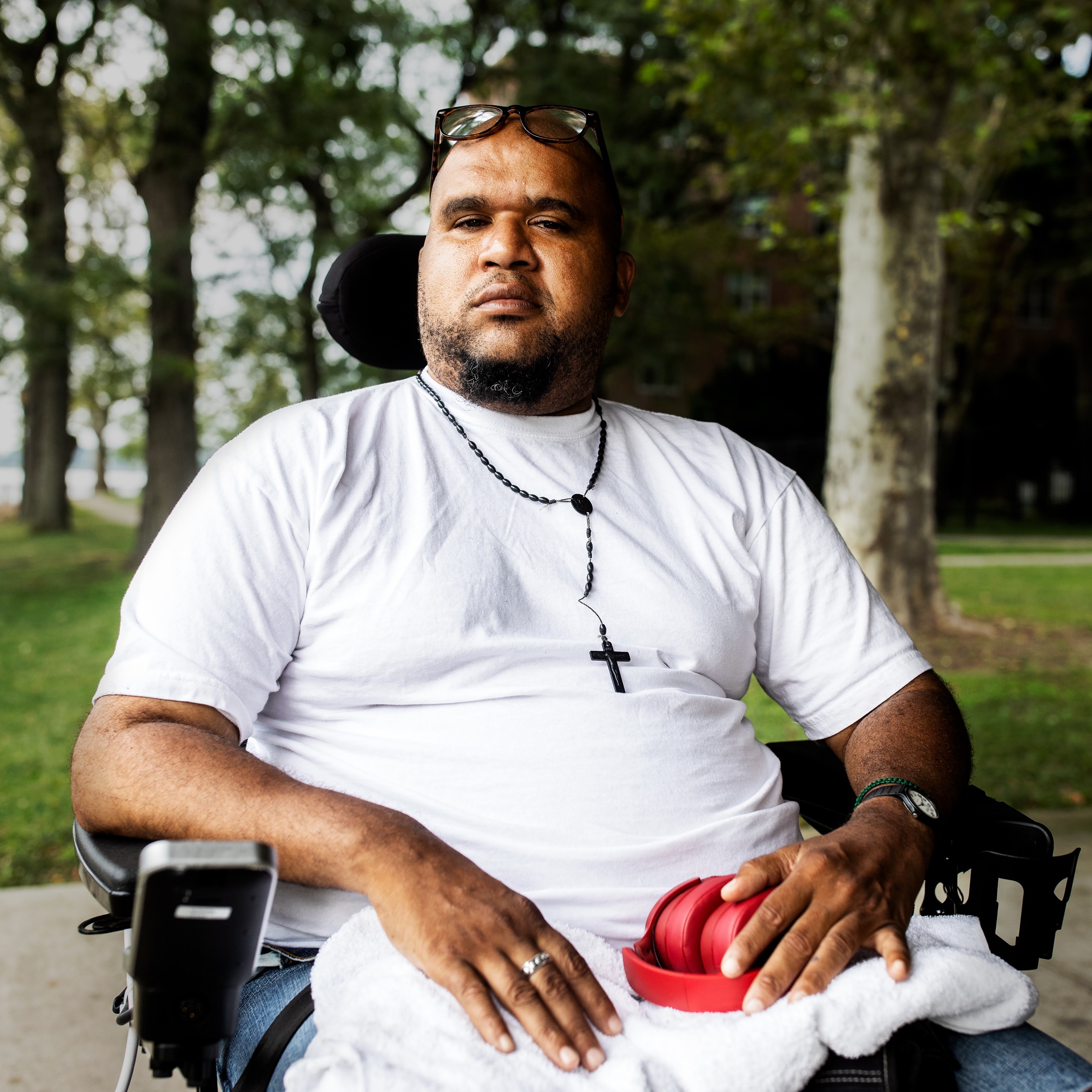
The group has a strong pull. Even when guys move out of Coler, they return to work on projects for Open Doors, to be back on the island, and—maybe most of all—to check on each other. In March, after living at Coler for almost 20 years, Harris moved into his own apartment. He frequently makes the journey from East Harlem to the island, either by Uber or Access-A-Ride, the city's public transportation for people with disabilities. Sometimes he takes the public bus to 59th Street, rides the tram over the East River, and then takes the red bus up to Coler.
El doesn't live at Coler anymore, either—after completing physical rehab a few years ago, he moved back in with his mother in the Bronx. But on any given day he's likely to be back here, hanging with his crew. One afternoon in June, El took the elevator up to Coler's second floor and entered the library, an air-conditioned refuge from the harsh sun outside. Var's shoulder was hurting, so El lifted his friend's arm and tried to stretch it out. He dug his fingers in, trying to work out the pain.
Sign up for our newsletter to get the best of VICE delivered to your inbox daily.
Follow Elizabeth Van Brocklin on Twitter.
from VICE https://ift.tt/2Mmb6xA
via cheap web hosting
No comments:
Post a Comment